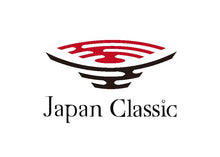【Japanese Pottery】Does each part of pottery have its own name? I will explain it in an easy-to-understand manner.
About the Author
Hayato Eihara
I am a Japanese resident living in Japan!
With years of experience, I share in-depth and detailed information about Japan with the world.
As part of my mission to promote Japanese culture, I also run Japan Classic, an online shop specializing in unique, high-quality tableware. If you're interested, feel free to check it out!
Table of Contents
- 1.Names of Different Parts of Ceramic Ware
- 2. Names of Different Parts of Jars and Bottles
- 3. Names of Different Parts of Bowls and Plates
- 4. Names of Different Parts of a Matcha Bowl (Chawan, 抹茶椀)
- 5. Why These Terms Matter
1. Names of Different Parts of Ceramic Ware
Ceramic ware shares many terminologies with the human body. For example, the rim of a vessel is called the "mouth" (口, kuchi), while the lower section is referred to as the "waist" (腰, koshi). These terms are commonly used when discussing pottery in museums, galleries, and ceramic shops. Additionally, the surface of the piece is sometimes referred to as "skin" (肌, hada).
As a ceramic artist, I often find myself having conversations with fellow potters using these terms in casual speech, such as:
"I need to tighten the neck of the next pot."
"The way I trimmed the waist and lower section of this tea bowl is terrible. It’s a disaster!"
Without context, these phrases might sound confusing or even alarming to outsiders, especially in public places like on a train!
2. Names of Different Parts of Jars and Bottles
 Some pieces are even named based on their distinctive features:
Some pieces are even named based on their distinctive features:- A "crane-necked sake bottle" (鶴首徳利, tsuru-kubi tokuri) has a long, slender neck resembling a crane.
- A "shouldered tea container" (肩衝茶入, kata-tsuki chaire) is named for its prominent shoulder shape.
Additionally, handles (ears, 耳, mimi) play a functional and decorative role. Some examples include:
- Twin-eared jars (双耳壺, sōjiko)
- Triple-eared jars (三耳壺, sanjiko)
- Quadruple-eared jars (四耳壺, shijiko)
Handles were originally used to tie lids with cords, but over time, they evolved into ornamental features.
If you come across a pottery description such as:
- "The smooth curve from the waist to the shoulder creates a gentle silhouette."
- "This piece is reminiscent of the classic three-eared jars seen in medieval times."
Understanding these terms makes it easier to visualize the shape and structure of the vessel.
3. Names of Different Parts of Bowls and Plates
 Compared to jars and bottles, bowls and plates have a simpler structure, with wide openings and shallow interiors. Because they lack necks and shoulders, these parts are not named.
Compared to jars and bottles, bowls and plates have a simpler structure, with wide openings and shallow interiors. Because they lack necks and shoulders, these parts are not named.
Flat plates do not have a well (見込み, mikomi), body (胴, dō), or waist (腰, koshi). Many plates also lack a foot ring (高台, kōdai), in which case the rim (縁, fuchi) and base (底, soko) are used to describe them instead.
Familiarity with these names enhances communication and appreciation of ceramic craftsmanship.
4.Names of Different Parts of a Matcha Bowl (Chawan, 抹茶椀)
 Matcha bowls (抹茶椀) have unique terminology influenced by Japanese tea ceremony traditions. Many of these names are related to tea utensils, such as:
Matcha bowls (抹茶椀) have unique terminology influenced by Japanese tea ceremony traditions. Many of these names are related to tea utensils, such as:
- Tea cloth (茶巾, chakin)—used to wipe the bowl.
- Tea whisk (茶筅, chasen)—used to mix the matcha.
Key Parts of a Matcha Bowl
- Chakin-zuri (茶巾摺り): The area where the tea cloth (chakin) frequently wipes the bowl. This is usually a shallow part of the well (見込み, mikomi). To prevent the cloth from snagging, this section is often carefully glazed or finely trimmed.
- Chasen-zuri (茶筅摺り): The whisking area where the tea whisk (chasen) stirs the matcha. This is typically deeper in the bowl. Like the chakin-zuri, this section is designed to minimize friction and wear on the chasen. Many older matcha bowls exhibit glaze loss in this area due to repeated use.
- Chadamari (茶溜まり): A small depression in the center where a tiny amount of matcha remains after drinking. The shape of the well is designed so that leftover tea collects neatly in this spot.
- Kōdai-waki (高台脇): The side of the foot ring, which is often left unglazed to reveal the natural clay texture. The trimming style of this area showcases the artist’s craftsmanship and can serve as a visual highlight of the piece.
- Kōdai-ura (高台裏, Inner Foot Ring):Like the kōdai-waki, this area features distinctive carving techniques, such as:
- Tokin (兜巾, swirl design): a spiral trimming pattern in the center.
- Mikazuki-kōdai (三日月高台, crescent foot): a slightly offset trimming style.
5. Why These Terms Matter
Using precise terms makes discussions about matcha bowls clearer and more efficient. For example, instead of saying: "The inside of this tea bowl, a little below the middle, but not quite at the bottom..." You can simply say: "The chasen-zuri area."
Similarly, when reading a pottery description such as: "This piece features distinctive trimming marks (ヘラ目, herame) from the waist to the foot ring. The foot’s contact point (畳付, tatami-tsuki) shows glaze peeling in some areas." Understanding these specific terms helps visualize the piece more accurately.
By learning these names, you can communicate more effectively about matcha bowls and gain a deeper appreciation for their craftsmanship.
Brighten Up Your Table.
We deliver vibrant, high-quality pieces directly from Japan to add color and elegance to your dining experience.







Leave a comment